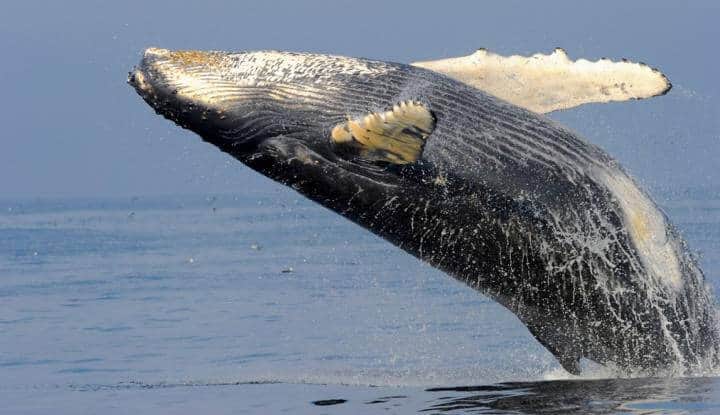Australia has one of the highest rates of animal species that face extinction, decline or negative impacts from human behavior in the world.* However, over the last decade, there have been rare occurrences of animals that are rebounding and thriving. One example is the conservation success story of the recovery of the humpback whales that breed in both East and West Australian waters. This new study, published in Marine Policy and led by Dr. Michelle Bejder, reviews data collected in past studies and proposes a revision of the conservation status for the humpback whales found in Australian waters.
In Australia, the east and west coast humpback whale populations are listed as a threatened species with a ‘vulnerable’ status as defined by the Environment Protection and Biodiversity Conservation Act 1999 (EPBC Act). However, according to Professor Lars Bejder at Murdoch University Australia, School of Veterinary and Life Sciences and his international co-authors, data reveals that these whale populations are increasing at remarkable rates (9% for West Coast and 10% for East Coast; as of 2012), the highest documented worldwide. As of 2012, both the East and West Coast whale populations had more than 63% (East Coast) and 90% (West Coast) of the number of whales estimated in each population before the whaling era (approximately 1912-1972). Since humpback whales no longer fulfil the criteria of the EPBC Act, the study suggests, they should have their conservation status revised.
“Our conclusions serve as an example of optimism and hope in the conservation of marine fauna protection, as the relentless communication of marine conservation problems does not always encourage politicians, policy makers, and the public to solve them,” said Prof. Bejder. “We highlight a success story, which provides hope and optimism that ongoing conservation actions can prevail.”
Should humpback whales be removed from the threatened species list, a direct consequence for conservation biology could be the redirection of research and management funding to enhance the survival of other species and ecosystems that are in greater risk of extinction. Furthermore should removal or downlisting occur, the whales would still be protected in Australian waters as a Matter of National Environmental Significance, because they are considered migratory species. On the international level, the International Whaling Commission manages the global moratorium on commercial whaling, which is essential to maintain the humpback whales’ successful recovery.
“Future challenges in Australia will be to protect a marine environment that contains growing humpback whale populations and to develop alternative approaches to ecological sustainability,” said Dr. David Johnston of Duke University USA, co-author of the study. “There will be increases in interactions with maritime users, including acoustic disturbance from noise, collisions with vessels, entanglements in fishing gear, habitat destruction from coastal development and cumulative interactions with the whale-watch industry. Therefore, adaptive management actions and new approaches to gain public support will be vital to maintain the growth and recovery of Australian humpback whales and prevent future population declines.”
Summarizing the key message of the review study, Prof. Bejder stated, “The recovery of the iconic humpback whales of Australia delivers both hope and optimism, as well as an opportunity to celebrate success at two levels: (1) the successful implementation of contentious international management actions to protect marine species; and (2) the wise and significant investment in conservation science, illustrating how society can respond to strong conservation interventions to achieve outcomes that are not simply for immediate, human material gains. While significant (often seemingly insurmountable) obstacles stand in the face of conserving many marine species and ecosystems, humpback whales provide an opportunity to embrace a conservation success.”

